Protecting Posts From Rot
Based upon a Journal of Light Construction article by Grant Kirker, research forest products technologist at USDA’s Forest Products Laboratory in Madison, WI
Posts rot when decay fungi find wood they can digest. Insects such as subterranean termites can also cause posts to fail, but they aren’t common in cold climates, whereas fungi are widespread. Posts often rot at ground level and break off simply because this is where conditions are most conducive for decay to occur, as well as being where highest physical stress occurs. Here, fungi find those three basic things they need to grow and survive: moisture (from soil), oxygen (from air), and food (post itself).
While some wood species—such as eastern white cedar and black locust—are naturally resistant to decay fungi, their performance is highly dependent on extractive content in heartwood, and can be variable. Preservative treatment is a more controlled process resulting in more predictable performance, especially in soil contact. Wood preservatives have historically been formulated to be broad spectrum so they protect from a wide range of organisms. Most waterborne preservative systems commonly used today employ a metallic component (usually copper) combined with co-biocides to improve resistance to copper-tolerant fungi, molds, and bacteria. Our studies have found yellow-pine posts treated with several industrial wood preservatives (including CCA, ACA, pentachlorophenol, and creosote) have remained highly durable even after 50 years of field exposure in a harsh environment.
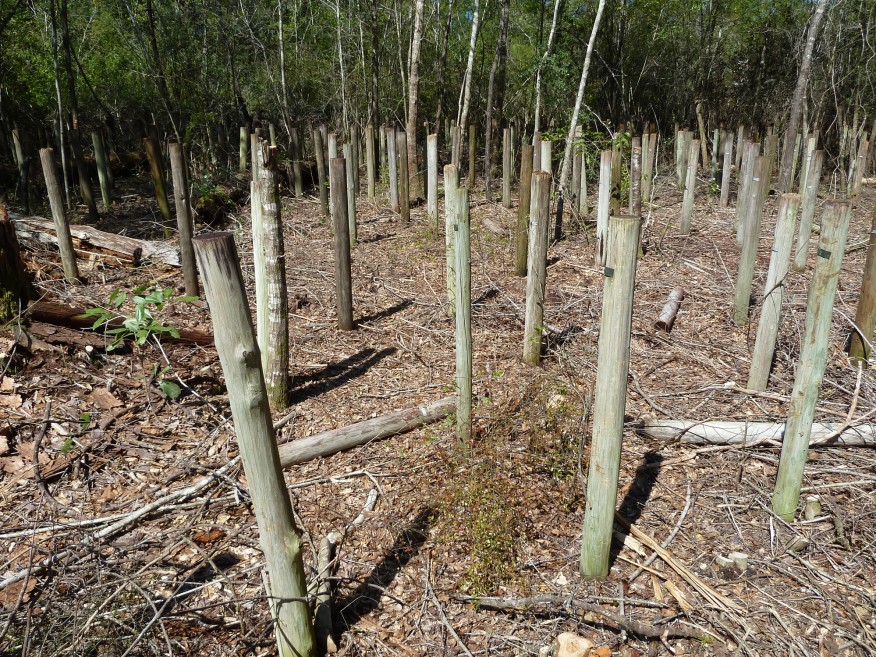
U.S. Forest Service Harrison Experimental Forest test plot in Saucier, Miss.—classified as a severe decay hazard according to AWPA’s Fungal Decay Hazard Map—is filled with longleaf-pine posts.
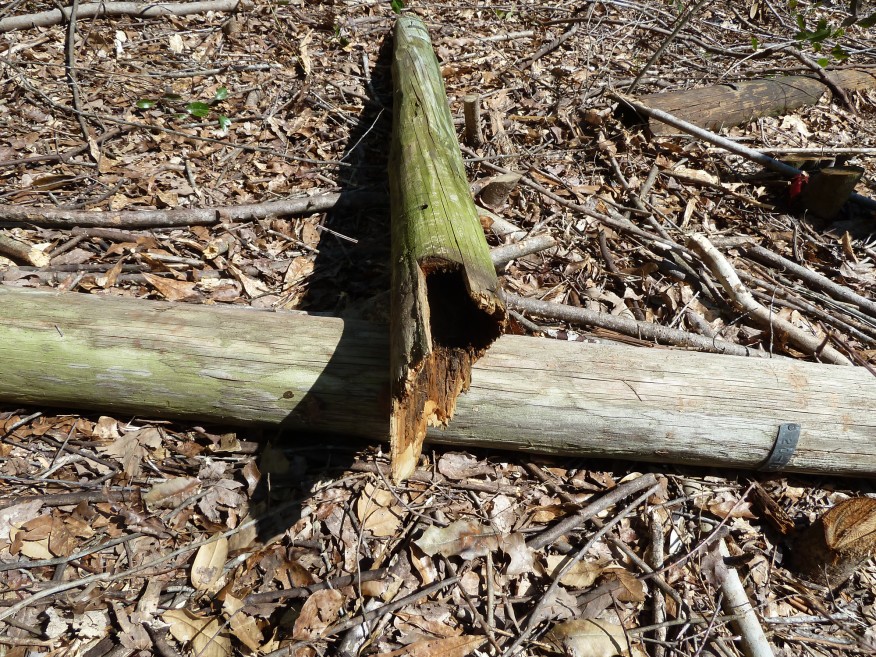
U.S. Forest Service A post is assessed by giving it a lateral pull of 50 pounds. If a post breaks at the ground line, it fails; if it doesn’t break, it passes. Tests have been conducted on these posts using this protocol since they were installed in 1964.
In order for a preservative to be effective, wood must be treated to proper retention level and penetration. If wood is treated only on the surface, any cracks or splits open up the treatment envelope and expose untreated wood, and can be readily eaten by fungi and insects. Some wood species (southern yellow pine, for example) are easy to treat and take up preservatives readily, while others (such as Douglas fir and lodge-pole pine) are more difficult to treat due to their wood cell orientation or heartwood presence. These species are often referred to as “refractory” and may require additional preparation (incising, steaming, and so on) to open up wood so it better accepts treatments.
When choosing wood for posts, check the end tag to confirm lumber is pressure-treated in accordance with either, American Wood Protection Association (AWPA), or International Code Commission (ICC). On the label, look for the product’s designated Use Category, or UC. The AWPA’s Use Category system specifies target retention levels for different preservative types to meet specific applications; UC 4B lumber (with a 0.60 pcf retention level for CCA, ACZA, and ACQ or 0.23 pcf for MCA) is required for harsh below-ground exposure in wet areas or regions with high decay hazard (like Southeast or Hawaii).
It’s not necessary to special-order heavy-duty marine-grade PT lumber. Marine pilings are typically treated to retention levels as high as 2.5 pcf CCA (chromated copper arsenate – generally no longer available for residential use) to ward off marine animals such as limnoria, teredo, and phloads, since some of these pests have been found to be copper tolerant. But for soil exposure, higher loadings aren’t necessary and just increase product cost.

U.S. Forest Service In addition to long-term industrial wood preservatives field testing, Forest Product Laboratory conducts research to develop new and improved treatment schedules for a variety of wood species. FPL’s state-of-the-art wood-treating pilot plant, constructed in 2010, offers five different preservative treatment retorts and can accommodate samples up to 12 feet long.
If you have to cut a PT post, be sure to dress any field cuts with a copper-naphthenate preservative containing at least 1% elemental copper. Examples include Copper-Green’s Wood Preservative (coppergreen.com), Tenino copper naphthenate (coppercare.com), and Woodlife Coppercoat (rustoleum.com). Cutting, drilling, or notching PT lumber exposes wood inner faces possibly not treated to the same retention as outer surfaces.
Some installers report wrapping post base with sheet copper or galvanized steel prolongs post life. While post wraps and barriers seem to offer some increased longevity, any gaps, holes, or voids behind the barrier or wrap will compromise the barrier and make it less useful. Coating post base with asphalt roofing cement, driveway sealer, tar, or a bituminous self-adhesive flashing tape are fairly common practices. In concept, these practices would seem to block some moisture transfer into wood, but there isn’t any research to suggest it increases longevity.
Finally, setting posts in concrete offers several advantages. First off, it reduces lateral post movement once it sets, making installation balance much easier. For square posts in foundations, it eliminates some shifting and settling. A recent European study evaluating concrete vs. gravel vs. dirt fill found concrete fill was a best option in regards to longevity and durability, but again, proper pressure treatment is key to long-term field performance. If fully encasing posts in concrete, be sure to bring concrete sleeve above grade and slope top surface away from post to shed water, as recommended in most local building codes.
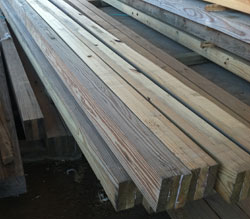 Back in the day, most engineers specified a minimum lumber grade on their plans (such as Douglas Fir #1 or better) and didn’t go much further. Then someone mentioned glu-laminated timber industry was using a volume factor to modify a member’s section modulus (S or Sm) indirectly influencing stress carrying capacities. It was wondered if sawn lumber should have a similar factor, resulting in actual in grade physical testing.
Back in the day, most engineers specified a minimum lumber grade on their plans (such as Douglas Fir #1 or better) and didn’t go much further. Then someone mentioned glu-laminated timber industry was using a volume factor to modify a member’s section modulus (S or Sm) indirectly influencing stress carrying capacities. It was wondered if sawn lumber should have a similar factor, resulting in actual in grade physical testing.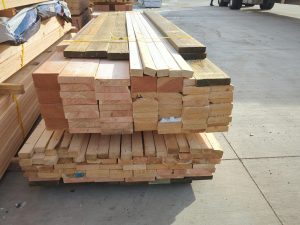 The phenomenon that the allowable Fb value decreases as the depth increases has been proven by extensive testing. The current span tables–for all lumber species–reflect that testing. As to why it is so, there is no conclusive answer, but several theories have been offered. My own theory is based on probability–under ASTM test protocols, more knots and other imperfections are likely to occur in wider pieces of lumber.
The phenomenon that the allowable Fb value decreases as the depth increases has been proven by extensive testing. The current span tables–for all lumber species–reflect that testing. As to why it is so, there is no conclusive answer, but several theories have been offered. My own theory is based on probability–under ASTM test protocols, more knots and other imperfections are likely to occur in wider pieces of lumber.


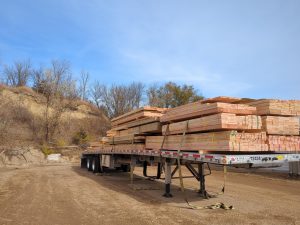 The most recent testing of Southern Pine lumber resulted in a technical proposal by the Southern Pine Inspection Bureau to significantly lower design values. This submittal was reviewed by the Forest Product Laboratory.
The most recent testing of Southern Pine lumber resulted in a technical proposal by the Southern Pine Inspection Bureau to significantly lower design values. This submittal was reviewed by the Forest Product Laboratory.





